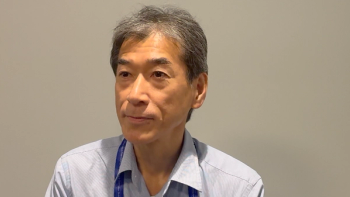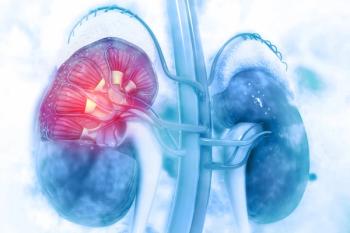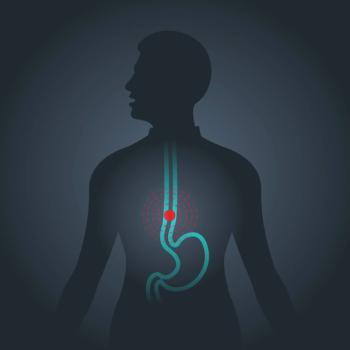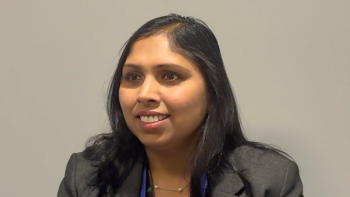
Unraveling The Benefits of Twice-Daily Chemoradiotherapy in LS-SCLC
Twice-daily radiotherapy prolongs survival vs once-daily radiation among those with LS-SCLC, even with the incorporation of immunotherapy.
Administering chemoradiotherapy (CRT) twice daily improved survival and reduced toxicity vs once-daily treatment among patients with limited-stage small cell lung cancer (LS-SCLC), according to Bin Gui, MD. However, it is necessary for additional research in the form of head-to-head randomized trials to validate the observed benefits of twice-daily radiotherapy.
At the
Gui also reviewed strategies for incorporating dosimetry constraints, comprehensive supportive care, and other measures for sustaining quality of life among those undergoing thoracic radiotherapy. Furthermore, he described how less lymphocyte depletion reported with twice-daily CRT in the meta-analysis necessitated future work exploring the synergistic effect between radiation and immunotherapy.
“The addition of immunotherapy appears to favor twice-daily over once-daily [concurrent] CRT for LS-SCLC, with improved survival and reduced lymphocyte depletion,” Gui concluded.
CancerNetwork: What was the background for assessing twice-daily vs once-daily radiotherapy for this LS-SCLC population?
The assessment of twice-daily vs. once-daily thoracic radiotherapy for LS-SCLC stemmed from a need to determine the optimal radiotherapy regimen as the standard of care with concurrent CRT continues to evolve. Earlier studies suggested twice-daily accelerated radiotherapy improved outcomes. However, its clinical adoption has been limited, particularly in North America, due to concerns about esophagitis and logistical challenges. More recently, the [phase 3] ADRIATIC trial [NCT03703297] demonstrated a significant benefit from adding consolidation immunotherapy following concurrent CRT, creating the need to understand how best to integrate this strategy with the concurrent CRT regimen, including the choice of radiotherapy fractionation schedule.2
What were the key efficacy findings to emerge from this analysis? Was there anything particularly surprising about the results?
Eight trials comprising nearly 3000 patients were included for this meta-analysis.We found that twice-daily radiotherapy significantly improved 2-year OS by 13% compared to the once-daily regimen. More importantly, in the subgroup analysis of 3 trials incorporating immunotherapy, 2-year OS was 25% higher with twice-daily radiotherapy.
How might the tolerability and/or safety of twice-daily radiotherapy compare with once-daily treatment?
Across all trials, there were no differences in grade 3 or higher esophagitis or pneumonitis. Also, in the 2 trials that reported lymphocyte counts, twice-daily thoracic radiotherapy was associated with significantly less leukocyte depletion and lymphocyte depletion.
What are some best practices for improving quality of life among patients who undergo twice-daily or once-daily radiotherapy for SCLC?
Best practices [for maintaining quality of life] involve radiation dosimetry constraints to prevent [adverse] effects, establishment of new evidence for combining radiotherapy and immunotherapy, patient education, symptom management of [adverse] effects, and comprehensive supportive care. In this study, accelerated radiotherapy with shorter treatment course appears to be safe with reduced hematologic adverse events.
What are the next steps for improving outcomes with radiotherapy among patients with SCLC?
Less lymphocyte depletion observed with twice-daily thoracic radiotherapy warrants further investigation to optimize the synergistic effect of radiotherapy and immunotherapy. Head-to-head randomized trials comparing accelerated radiotherapy—either hyperfractionation or hypofractionation—and conventional fractionation CRT with consolidation immunotherapy are needed to validate these findings.
References
- Gui B, Akerman M, Sekari J, Plann-Curley B, Parashar B. Should we return to old school in a new era? A meta-analysis of twice daily vs. once daily concurrent chemoradiotherapy for limited-stage small cell lung cancer. Presented at the 2025 American Society of Radiation Oncology (ASTRO) Annual Meeting; September 27 – October 1, 2025; San Francisco, CA.
- Cheng Y, Spigel DR, Cho BC, et al. Durvalumab after chemoradiotherapy in limited-stage small-cell lung cancer. N Engl J Med. 2024;391(14):1313-1327. doi:10.1056/NEJMoa2404873
Newsletter
Stay up to date on recent advances in the multidisciplinary approach to cancer.



















































































